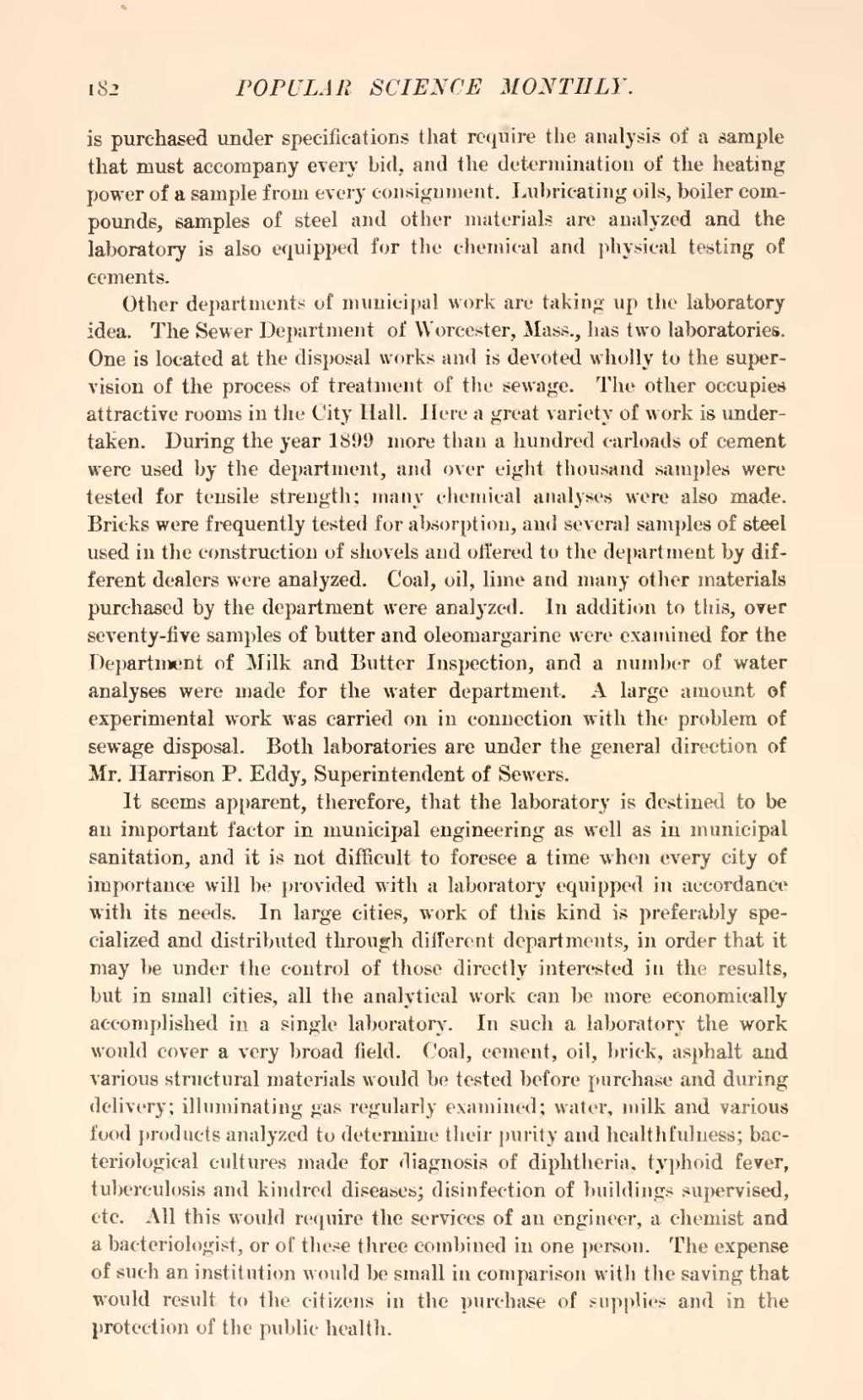is purchased under specifications that require the analysis of a sample that must accompany every bid, and the determination of the heating power of a sample from every consignment. Lubricating oils, boiler compounds, samples of steel and other materials are analyzed and the laboratory is also equipped for the chemical and physical testing of cements.
Other departments of municipal work are taking up the laboratory idea. The Sewer Department of Worcester, Mass., has two laboratories. One is located at the disposal works and is devoted wholly to the supervision of the process of treatment of the sewage. The other occupies attractive rooms in the City Hall. Here a great variety of work is undertaken. During the year 1899 more than a hundred carloads of cement were used by the department, and over eight thousand samples were tested for tensile strength; many chemical analyses were also made. Bricks were frequently tested for absorption, and several samples of steel used in the construction of shovels and offered to the department by different dealers were analyzed. Coal, oil, lime and many other materials purchased by the department were analyzed. In addition to this, over seventy-five samples of butter and oleomargarine were examined for the Department of Milk and Butter Inspection, and a number of water analyses were made for the water department. A large amount of experimental work was carried on in connection with the problem of sewage disposal. Both laboratories are under the general direction of Mr. Harrison P. Eddy, Superintendent of Sewers.
It seems apparent, therefore, that the laboratory is destined to be an important factor in municipal engineering as well as in municipal sanitation, and it is not difficult to foresee a time when every city of importance will be provided with a laboratory equipped in accordance with its needs. In large cities, work of this kind is preferably specialized and distributed through different departments, in order that it may be under the control of those directly interested in the results, but in small cities, all the analytical work can be more economically accomplished in a single laboratory. In such a laboratory the work would cover a very broad field. Coal, cement, oil, brick, asphalt and various structural materials would be tested before purchase and during delivery; illuminating gas regularly examined; water, milk and various food products analyzed to determine their purity and healthfulness; bacteriological cultures made for diagnosis of diphtheria, typhoid fever, tuberculosis and kindred diseases; disinfection of buildings supervised, etc. All this would require the services of an engineer, a chemist and a bacteriologist, or of these three combined in one person. The expense of such an institution would be small in comparison with the saving that would result to the citizens in the purchase of supplies and in the protection of the public health.
